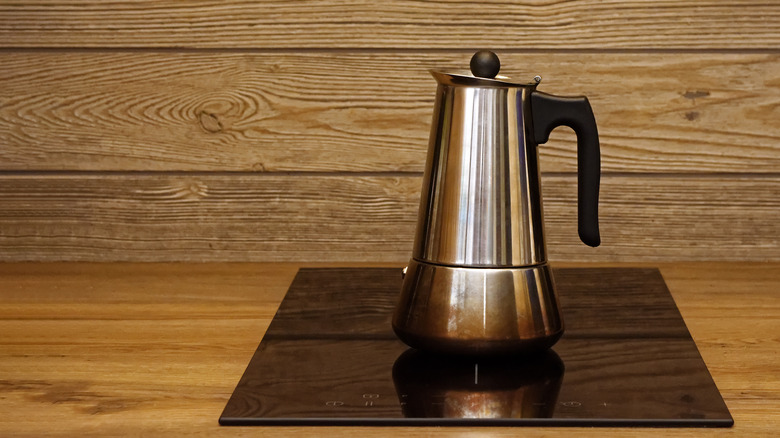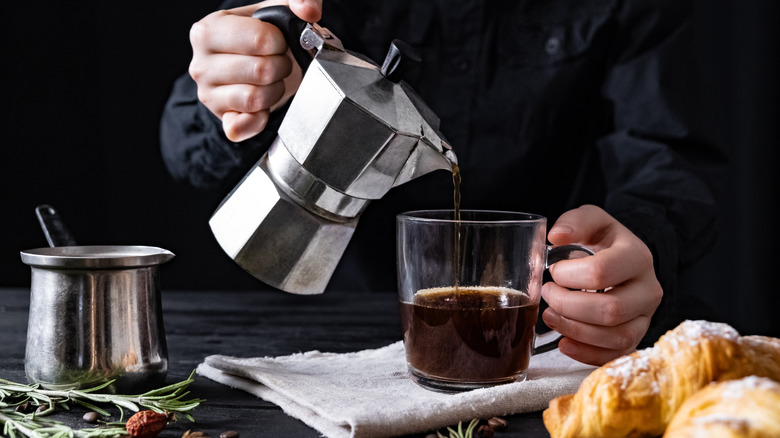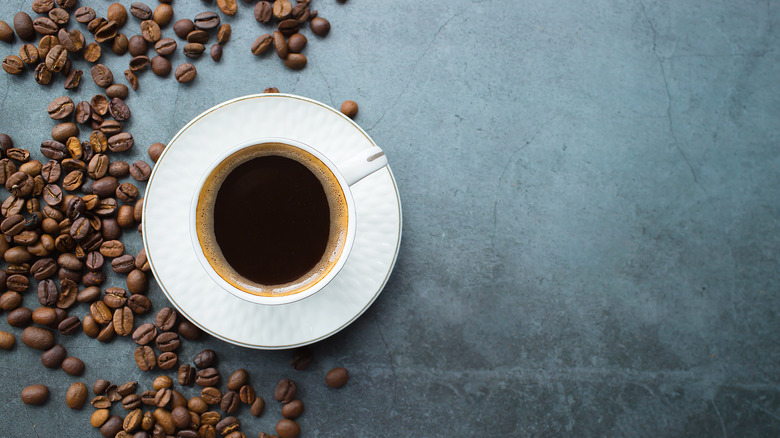Why It Pays To Brew Coffee In A Percolator
When it comes to choosing a coffee maker for your home, the number of options can be truly overwhelming. From a basic drip coffee maker to more complex options like the French press, AeroPress, Keurig, and pour-over, there are so many variables to weigh and popular options to choose from.
Instead of banking on new trends like nitrogen-infused coffee to take your mornings to the next level, perhaps it's time to consider reviving an old favorite instead: the percolator. The machine was invented in the late 19th century and was the predominant method of preparing coffee until the '70s when the automated drip coffee machine made it faster and easier for people to transition from fast asleep to fully alert.
But, what we gained in convenience some could argue we lost in flavor. Unlike the drip coffee machine, which sends boiling water through the grounds and keeps the resulting coffee warm inside the pot, the percolator continues to move scorching hot water through, leaving you with a creamier result and a stronger, smoother cup of joe.
How percolators work to produce such flavorful coffee
Percolators, which include the popular moka pot, come in both stovetop and electric iterations. Depending on the size of your model and your caffeine needs at a given moment, you can brew between two and 12 cups of coffee at a time. They have two chambers — the primary one that holds water, and a smaller one inserted inside that holds coffee grounds and has a tube that extends into the water below. Once both chambers are full, it's time to heat things up.
Place a stovetop model on a hot burner or turn on your electric percolator and you're well on your way to a delicious cup of caffeinated goodness. These machines work through convection — the water bubbles up and is forced through the tube that descends from the coffee-filled insert. Once inside the basket, the water and grounds create coffee, which drips back into the chamber below.
Water continuously circulates this way until the whole pot has become java. With a stovetop model, you'll want to watch it more closely to ensure it doesn't become too strong or begin to burn, but an electric percolator will automatically switch to a warming mode after the initial brew concludes. Because water gets hotter with this type of coffee maker than, say, a drip machine, it brews a stronger, richer cup of coffee with an all-around delightfully smooth finish.
Ensuring success when brewing percolator coffee
Though the percolator takes a bit more time and attention upfront, it delivers something truly divine for those who appreciate a potent beverage that packs a punch. They're also super easy to clean, as the component pieces are easily separated and returned to their pristine state with a little soap and water.
There are a few ways to ensure you have a great experience brewing coffee this way. First, choose a lighter roast that has been ground using the best setting for your particular model. Since your percolator will give you a strong cup of joe no matter what, starting out with a lighter roast will help avoid making a too-strong drink right off the bat.
It's also important to note that, while quickly boiling water will result in coffee in your cup faster, rushing the brew time will derive too much flavor from your grounds and make the drink harsh and bitter. Instead, start with hot water and slowly bring it to a boil for an overall smoother finish — and remember that you can always fix bitter coffee by adding a bit of salt.



